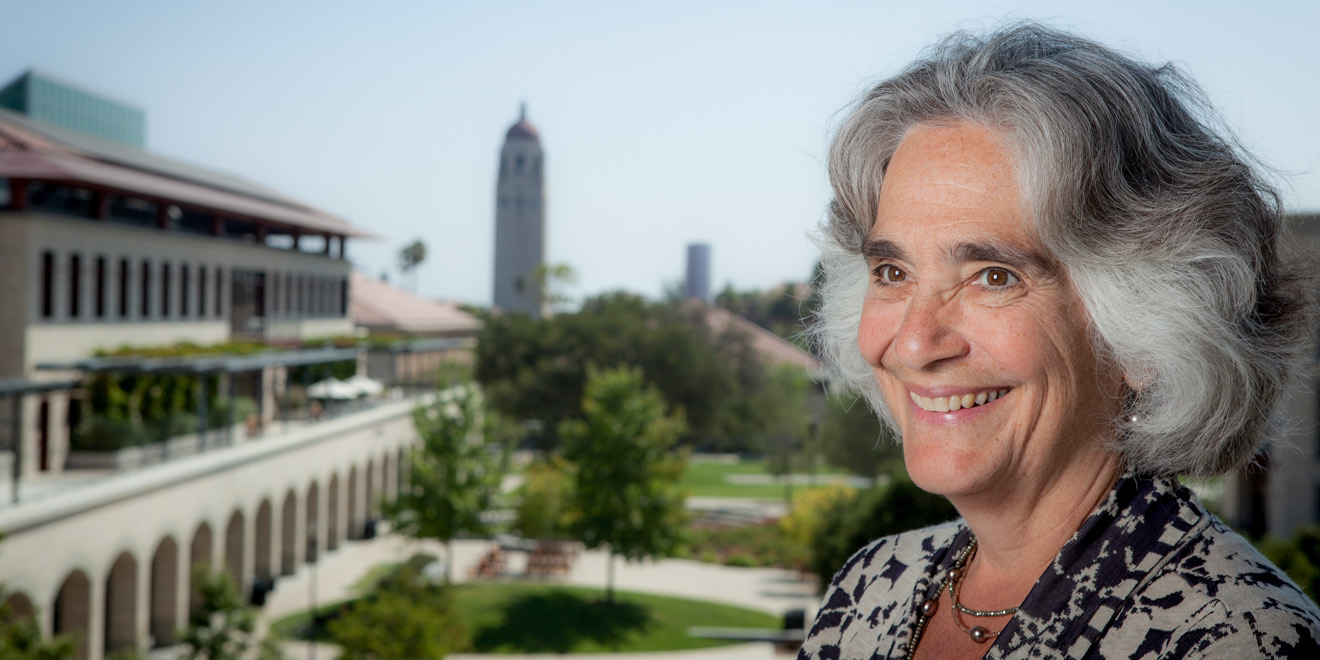Persis Drell was appointed as dean of Stanford’s School of Engineering in June. As a professor of physics and previous director of Stanford Linear Accelerator (SLAC) from 2007 to 2012, Drell is the first woman and first non-engineer to hold the position of dean of engineering.
The Stanford Daily spoke with Drell to hear her reflections on her first two months as dean.
The Stanford Daily (TSD): How has the transition to your new post as dean of engineering gone?
Persis Drell (PD): Great! I’m having fun.
TSD: What do you see as priorities for the School of Engineering?
PD: Well, I’ll talk about my [own] priorities. First, I’m not an engineer, so when my appointment was announced in June, the first thing that I did was cancel all of my engagements – well, except for my vacations. And then I spent my time talking to every member of the engineering school’s faculty. We have over 250 faculty members. So I talked to all of them, and I learned about the school. That was my first priority – to learn and understand the school. I have been dean for two months now, and while I can’t tell you what my “vision” is for the school, my focus has been to get to know it better.
TSD: Based on those conversations and other experiences that you have had thus far, what do you see as the strengths and weaknesses of the school?
PD: We are in great shape. Jim Plummer did an excellent job as dean before me. We have a beautiful new quad, and I love walking around the quad. When I walk around in those spaces during the summer, they look like nice spaces. Now I walk through those spaces during the year, and I see that not only are they nice spaces, [but] they are spaces that students want to be in. They are always filled with students… What may not be obvious to students is that more than half of the [engineering] faculty have been hired in the last 15 years under Jim Plummer, so there has been tremendous renewal among the faculty, and they are terrific. The school is in great shape. We have terrific students – that I know because I have taught some of you guys. The challenge and the fun is trying to figure out what we want to look like 15 years from now. And that’s my job.
TSD: You’re still a professor, and you’re still teaching freshman physics, but are there things that you miss from your time before being dean?
PD: If I look at my recent history, I spent five years as director up at SLAC, and then I had two glorious years with no responsibilities. That was pretty terrific. It couldn’t last. Now I am dean, and it’s fun, and it’s exciting, but now I have lots of responsibility again.
TSD: Do you think that over your tenure leading SLAC, you learned some lessons that you can apply as dean?
PD: Oh, absolutely. I learned an enormous amount. I went into that job without a whole lot of serious management experience, and it was very much trial-by-fire. I learned a lot of lessons that are applicable here, and the engineering school is in very good shape. SLAC was actually in a very difficult transition when I took over there. [Now] I’m not having to deal with the federal government on daily basis, and that’s just a treat.
TSD: You are the first female dean of Stanford Engineering. Do you feel that is an important landmark?
PD: Well, let’s get this right. I think I am the first dean from outside the [engineering] school, or the first dean from outside the school in a very long time. I think I am the first dean who is not an engineer. And I am the first dean who is a woman. So I’m not sure which one of those is more important. Is it a landmark? I don’t know. Is it noticed? Yes. Does it make a difference? Probably. I had a wonderful experience when I taught Physics 41A last winter, where for the first time I taught a physics course where the course was more than half women. I didn’t realize it was more than half women until the class was over. It just didn’t register. I noticed something was different, and I was taking a bunch of students out for lunch after the class was over, and I asked them whether they had noticed it. They hadn’t noticed it, and I hadn’t noticed it. So I expect [my time as dean] will be different, but it’s hard to say how.
This interview has been condensed and edited.
Contact Michael Gioia at mgioia2 ‘at’ stanford.edu.
